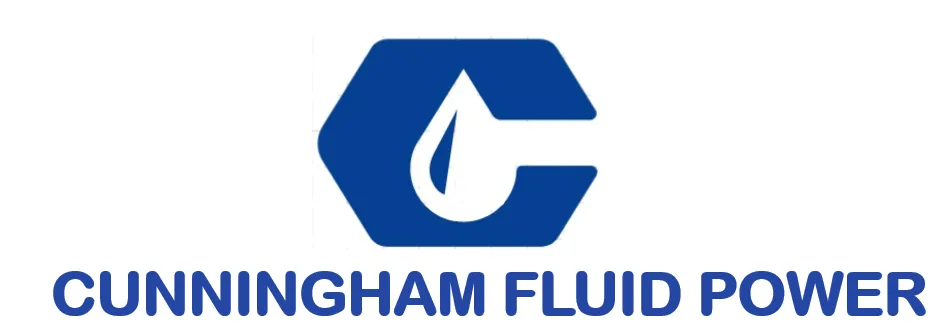Essential Guide to Choosing the Right Induction Metal Heater for Your Business Needs
In today's competitive manufacturing landscape, the selection of the appropriate heating technology can significantly influence operational efficiency and product quality. According to a report by MarketsandMarkets, the global induction heating equipment market is projected to grow to $1.5 billion by 2026, highlighting the increasing reliance on advanced solutions like the Induction Metal Heater in industrial applications. This technology not only offers faster heating times and improved energy efficiency—reported to be up to 90% more efficient than traditional methods—but also ensures precise temperature control, which is crucial for high-quality metal processing. As businesses seek to optimize their manufacturing processes and reduce energy costs, understanding the unique capabilities and applications of the Induction Metal Heater becomes essential. This guide aims to equip you with the necessary insights and practical tips for selecting the right induction heating solution tailored to your specific business needs.
Understanding Induction Heating: Key Concepts and Benefits for Your Business
Induction heating is a process that uses electromagnetic fields to generate heat directly in metal objects, offering numerous advantages for businesses seeking efficient heating solutions. At its core, induction heating relies on the principle of electromagnetic induction, where an alternating current is passed through a coil, creating a magnetic field that induces electric currents in conductive materials. This method of heating is not only fast but also highly controllable, allowing for precise temperature management, which is essential for applications like metal hardening, soldering, or melting.
One of the key benefits of induction heating is its energy efficiency. Traditional heating methods often waste energy by heating the surrounding environment, whereas induction directly heats the metal object, minimizing energy loss. Additionally, the reduced heating time translates to increased productivity, enabling businesses to meet higher demand without compromising quality. Safety is another crucial aspect; with induction heating, the risk of burns and accidents is significantly lower, as the heat is confined to the material being processed. By integrating induction heating into operations, businesses can enhance their overall efficiency and safety, positioning themselves for greater success in a competitive market.
Essential Guide to Choosing the Right Induction Metal Heater
This chart illustrates the key benefits of induction heating technology for businesses, showcasing its advantages based on various operational aspects.
Types of Induction Metal Heaters: Which One Suits Your Industry Best?
When selecting an induction metal heater for your business, it’s crucial to understand the various types available and how they align with your industry’s specific needs. Induction metal heaters can be broadly classified into several categories, including stationary, portable, and laboratory models. According to a recent industry report, the market for induction heating equipment is expected to grow significantly, reaching approximately $1.5 billion by 2025, driven by increasing demand for efficient heating solutions across sectors such as automotive, aerospace, and metal processing.
For manufacturers in the automotive sector, high-frequency induction heaters offer precise control and efficiency, making them ideal for applications like hardening and welding. In contrast, portable models are favored in repair and maintenance operations, providing flexibility for on-site tasks. For smaller-scale applications or research purposes, laboratory models designed for experimentation and development can allow engineers to refine processes without the need for extensive setups.
Tips: Always evaluate the wattage and frequency specifications of the induction heater, as these factors directly impact heating speed and effectiveness. Additionally, consider the size and material compatibility of the heater to align with your current operations. Engaging with suppliers to discuss your specific processes and potential applications can lead to better-informed choices tailored to your business requirements.
Factors to Consider When Choosing an Induction Metal Heater
When selecting an induction metal heater for your business, several key factors must be considered to ensure optimal performance and efficiency. Understanding the specific heating requirements of your materials is crucial. According to a recent report from the International Journal of Modern Manufacturing Technologies, nearly 70% of manufacturing defects stem from improper heating processes. This statistic underscores the importance of selecting a heater that matches the thermal properties of the metals you intend to work with.
Another critical factor is the power and frequency range of the induction heater. The right power level not only affects heating speed but also energy consumption. Data from the Manufacturing Energy Consumption Survey indicates that choosing the right induction heater can lead to energy savings of up to 30%. Furthermore, businesses should assess the heater’s ability to integrate with existing systems and processes, as well as its versatility for different applications. By thoroughly evaluating these factors, businesses can make informed decisions, enhancing productivity and reducing operational costs.
Evaluating Energy Efficiency and Cost-effectiveness of Induction Heaters
When selecting an induction metal heater, evaluating energy efficiency and cost-effectiveness is paramount for optimizing operational costs. According to a report by the Lawrence Berkeley National Laboratory, induction heating systems can achieve energy efficiencies of up to 90%, significantly outperforming traditional heating methods, which typically range between 30% to 70%. This high efficiency translates to reduced energy consumption and lower utility costs, essential factors for any business looking to enhance its bottom line.
Furthermore, the initial investment in an induction heater can be daunting, with systems ranging from a few thousand to tens of thousands of dollars. However, the long-term savings can be substantial. The U.S. Department of Energy highlights that businesses can save approximately 30% on energy costs by switching to induction heating. Additionally, induction heaters often require less maintenance than conventional heating systems, which can lead to further cost savings. With the advantages of reduced energy usage and maintenance needs, businesses can recoup their investments in induction heating systems within a few years, making them a cost-effective solution in the long run.
Maintenance and Support: Ensuring Longevity of Your Induction Heating Equipment
When it comes to investing in induction heating equipment, maintenance and support play a crucial role in ensuring the longevity and efficiency of your machinery. According to a report by the International Journal of Thermal Sciences, regular maintenance can increase the lifespan of induction heaters by up to 30%. This highlights the importance of establishing a routine maintenance schedule that focuses on monitoring critical components, such as power supplies and coils, to prevent unexpected breakdowns that can disrupt your production processes.
Furthermore, having access to reliable support services is essential for minimizing downtime and addressing any operational issues promptly. A survey from the Association of Manufacturing Technology indicates that businesses with robust support systems for their induction heating equipment report a 25% reduction in emergency repairs. This kind of proactive approach not only saves costs associated with unplanned maintenance but also enhances overall productivity by ensuring that the equipment remains in optimal working condition. Developing a partnership with experienced service providers can significantly impact your business’s operational efficiency and return on investment when it comes to induction heating technology.
Essential Guide to Choosing the Right Induction Metal Heater for Your Business Needs - Maintenance and Support: Ensuring Longevity of Your Induction Heating Equipment
| Feature | Description | Importance | Maintenance Tips |
|---|---|---|---|
| Heating Capacity | Power level that determines the amount of metal that can be heated at one time. | Ensures efficiency and effectiveness in metal processing. | Regularly check the heater’s performance and adjust settings as needed. |
| Coil Design | Specific shape and size of induction coils for optimal heating. | Maximizes heat transfer efficiency. | Inspect coils for wear and replace if necessary. |
| Energy Efficiency | How effectively the heater uses energy to produce heat. | Reduces operational costs and environmental impact. | Perform regular energy audits and maintenance checks. |
| Control System | User interface for adjusting heating parameters. | Ensures precise control over the heating process. | Keep the software updated and calibrate regularly. |
| Cooling System | Mechanism to prevent overheating of components. | Prolongs equipment lifespan and prevents failures. | Check coolant levels and inspect for leaks. |

We have over 30 years of experience in designing complete hydraulic systems, repairs and distribution of fluid power equipment and parts.
FOLLOW US ON :
Contact Details
Address:
4020 SE 45th CT.
Ocala, FL 34480
Phone No:
Email:
sales@cunninghamfluidpower.com

